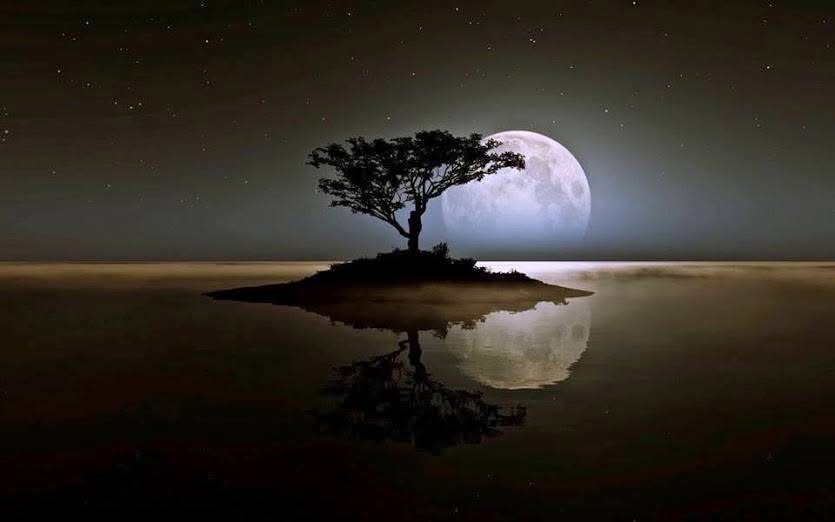Highlight Words In Action : August 2025
bipartisan
adjective: representing, characterized by, or including members from two parties or factions
From the headlines: The Trump administration’s decision to cut funding for the Open Technology Fund (OTF) has raised concerns among lawmakers, who see it as a vital tool against internet censorship in authoritarian regimes. Trump’s executive order effectively terminated the OTF’s budget, prompting bipartisan efforts to save the program. Advocates warn that without OTF-backed tools, many citizens and activists could lose secure communication channels, increasing their risk of surveillance and persecution.
bounty
noun: a premium or reward, especially one offered by a government
From the headlines: The United States has lifted bounties on three senior Taliban figures. The three members of the Haqqani militant network in Afghanistan were allegedly involved in planning deadly attacks during the war with the U.S., some of which killed American citizens. Until this week, the State Department had offered rewards of up to $10 million for the death or capture of the militant leaders. The move follows last week’s release of a U.S. hostage who had been held by the Taliban since 2022.
breach
noun: an infraction or violation, such as of a law, contract, trust, or promise
Jeffrey Goldberg, editor-in-chief of The Atlantic, disclosed that he was inadvertently added to a private Signal group chat used by U.S. national security officials. This unexpected breach exposed sensitive information, including details about military strikes in Yemen. The incident underscored a serious protocol violation, as national security deliberations are typically confined to secure, classified settings rather than informal messaging platforms.
cartography
noun: the production of maps, including construction of projections, design, compilation, drafting, and reproduction
From the headlines: After more than a decade of unraveling the mysteries of the universe, the space telescope Gaia has officially powered down. In its ten years of operation, Gaia meticulously mapped nearly 2 billion stars, 150,000 asteroids, and countless other celestial wonders. This cartography resulted in a precise, three-dimensional map of our solar system, which has transformed our understanding of the Milky Way.
civil liberty
noun: the freedom of a citizen to exercise customary rights, as of speech or assembly, without unwarranted or arbitrary interference by the government
From the headlines: Legal experts say surveillance methods being used by colleges and universities on their students may violate their civil liberties. When investigating vandalism connected to political protests, campus police have been using new tactics, including seizing students’ phones and laptops. They have also issued warrants based on social media posts or participation in campus protests. Civil liberties experts say these actions amount to stifling university students’ right to free speech.
confiscate
verb: to seize as forfeited to the public domain; appropriate, by way of penalty, for public use
From the headlines: A kite was briefly confiscated after it came into contact with a United Airlines plane near Washington, D.C. The aircraft landed safely at Ronald Reagan National Airport following reports of a kite hitting it. Police seized the kite from a family at nearby Gravelly Point park, but returned it later. Despite the fact that kite flying is banned there because the sky overhead is “restricted airspace,” about a dozen people had reportedly been flying kites at the park that day.
defraud
verb: to deprive of a right, money, or property by fraud
From the headlines: Hollywood writer-director Carl Erik Rinsch was arrested for defrauding Netflix of $11 million, meant for his unfinished sci-fi show White Horse. Prosecutors say he spent around $10 million on luxury purchases, including Rolls-Royces, a Ferrari, and antiques. Prosecutors also claim that he used the money to pay legal fees to sue Netflix for additional money. Rinsch has been charged with wire fraud and money laundering, while Netflix has declined to comment.
embezzlement
noun: the stealing of money entrusted to one’s care
From the headlines: French politician Marine Le Pen was convicted of embezzlement and barred from public office for five years. Le Pen, who leads the far-right National Rally party, had planned to run for president in 2027. She was also sentenced to four years in prison for spending $4.3 million in European Parliament funds on her own party expenses.
Fun fact: Embezzlement is from the Anglo-French enbesiler, “cause to disappear,” and an Old French root meaning “to destroy or gouge.”
fairway
noun: Golf. the part of the course where the grass is cut short between the tees and the putting greens
From the headlines: When golf courses close, research shows the surrounding environment improves. With declining interest in golf, nearby neighborhoods report benefits like less flooding and reduced pesticide runoff. Across the U.S., many former courses have been repurposed as nature reserves, where manicured fairways have been replaced by thriving wildflower meadows.
forage
verb: to wander or go in search of provisions
From the headlines: A new online map shows where 1.6 million edible plants grow in cities around the world. The guide, called Falling Fruit, is meant to help urban dwellers and visitors forage for food. Its open source design means people can add locations, mapping additional fruit trees, berry bushes, beehives, and plants that might otherwise go unnoticed.
franchise
noun: Sports. a professional sports team
From the headlines: A group led by Bill Chisholm has agreed to buy the Boston Celtics for $6.1 billion, making it the most expensive franchise sale in North American sports history. The Celtics, fresh off their 18th NBA title, are facing significant financial challenges under the new collective bargaining agreement, but remain favorites to repeat as champions.
geriatric
adjective: noting or relating to aged people or animals
From the headlines: The New England Aquarium in Boston has introduced a new “retirement home” for geriatric aquarium penguins, relocating six elderly birds to a designated island. While wild penguins typically live about ten years, the new aquarium houses twenty penguins in their twenties and thirties. This specialized haven ensures these aging animals receive monitoring for conditions such as arthritis and cataracts.
Fun fact: The Greek gērōs, “old,” is the root of geriatric.
iguana
noun: a large, arboreal lizard, native to Central and South America, having stout legs and a crest of spines from neck to tail
From the headlines: A recent study sheds light on how North American iguanas may have reached a remote island in Fiji. Genetic analysis suggests that these large reptiles likely traversed thousands of miles across the Pacific Ocean by drifting on makeshift rafts of fallen trees. If confirmed, this would represent the longest documented oceanic migration by any terrestrial vertebrate, apart from humans.
inaccessible
adjective: not accessible; unapproachable
From the headlines: Researchers investigating why we can’t remember being babies found evidence that those memories still exist in our brains, but are inaccessible. Scientists have long suspected that infants don’t create memories at all. A new study using MRI imaging to observe babies’ brains found that around 12 months old, they do begin storing memories of specific images. Neuroscientists are now focused on learning why these early recollections become locked away and out of reach as we grow older.
magnitude
noun: greatness of size or amount
From the headlines: A devastating 7.7 magnitude earthquake struck Myanmar, killing over 3,000 people and leaving hundreds missing. The tremors were so intense they reached 600 miles to Bangkok, where skyscrapers swayed. In response, China, India, and Russia sent rescue teams, while countries like Thailand, Malaysia, and Vietnam offered aid.
manipulate
verb: to adapt or change (accounts, figures, etc.) to suit one’s purpose or advantage
From the headlines: A cheating scandal shook the world of professional ski jumping this week. Several members of Team Norway were suspended after officials found evidence that their ski suits had been manipulated to make the athletes more aerodynamic. The team’s manager admitted to illegally adding an extra seam where the legs are sewn together; more material there was hoped to give the jumpers extra lift and allow air to flow around them more efficiently.
mush
verb: to drive or spur on (sled dogs or a sled drawn by dogs)
From the headlines: Greenland’s annual dog sledding race attracted unusual international attention when the White House said the vice president’s wife, Usha Vance, would attend. Vance canceled her trip after Greenlanders planned to protest her presence at the event. Competitors in the Avannaata Qimussersua, or “Great Race of the North,” mushed their dogs over 26 snowy miles. Henrik Jensen, a musher from northern Greenland, crossed the finish line in first place, pulled by his team of Greenlandic sled dogs.
ovine
adjective: pertaining to, of the nature of, or like sheep
From the headlines: The world’s first known case of bird flu in sheep was diagnosed in Yorkshire, England. After the H5N1 virus was found among birds on a farm, health officials also tested its flock of sheep; only one ovine case was detected. The infected sheep was euthanized to prevent the disease from spreading, and officials said “the risk to livestock remains low.”
pontiff
noun: Ecclesiastical. the Roman Catholic pope, the Bishop of Rome
From the headlines: Following the release of Pope Francis from the hospital on March 23, his lead physician said the pontiff had faced such grave danger that his medical team considered halting treatment. During his hospitalization, the pope endured two critical health crises, prompting intense deliberations over whether aggressive interventions should continue, given the potential risks to his internal organs. Ultimately, the doctors opted to pursue “all available medicines and treatments,” a decision that proved pivotal to his recovery.
populism
noun: grass-roots democracy; working-class activism; egalitarianism
From the headlines: Bernie Sanders is drawing unprecedented crowds on his “Fighting Oligarchy” tour, fueled by a message rooted in economic populism. His rhetoric resonates with disillusioned voters seeking an alternative to both President Trump and the Democratic Party. The independent senator from Vermont frequently denounces what he terms a “government of the billionaires, by the billionaires, and for the billionaires,” while chastising Democrats for failing to adequately champion the interests of the working class.
prescription
noun: a direction, usually written, by the physician to the pharmacist for the preparation and use of a medicine or remedy
From the headlines: A new trend is emerging in healthcare — doctors are now prescribing museum visits. Backed by research showing that time spent in cultural spots can boost mental health and ease loneliness, more physicians are encouraging patients to explore art galleries, theaters, concert halls, and libraries. These cultural outings are said to reduce stress, alleviate mild anxiety and depression, and even improve conditions like high blood pressure. It’s the prescription you didn’t know you needed.
pristine
adjective: having its original purity; uncorrupted or unsullied
From the headlines: Many countries are looking to Switzerland as a model, hoping to replicate its transformation of once heavily polluted rivers and lakes into some of the most pristine in Europe. In the 1960s, Swiss waterways were choked with algae and dead fish due to sewage and industrial pollution. However, over the following decades, the country made significant investments in advanced water treatment facilities. Today, nearly all of its lakes and rivers are once again pristine and safe for swimming.
prolong
verb: to lengthen out in time; extend the duration of; cause to continue longer
From the headlines: After their quick trip to the International Space Station turned out to have an unexpectedly long duration, two NASA astronauts have been safely returned to Earth. What began as an eight-day mission for Butch Wilmore and Suni Williams had to be prolonged after their Starliner spacecraft experienced helium leaks and thruster problems. The two ended up staying on the ISS for more than nine months, until two seats were available on a returning space capsule.
recruit
verb: to attempt to acquire the services of (a person) for an employer
From the headlines: As the White House cuts funding for scientific research, European countries are stepping up to recruit top U.S. scientists. Experts in climate change and vaccine safety are now eyeing job offers across the Atlantic, with France and the Netherlands boosting their budgets to hire talent for their universities.
reinstate
verb: to put back or establish again, as in a former position or state
From the headlines: On March 24, a South Korean court reinstated impeached Prime Minister Han Duck-soo. Han was returned to the government and named acting leader once his impeachment was overturned. President Yoon Suk Yeol, who was also removed from office, is still awaiting a verdict. Han and Yoon were both suspended by South Korea’s National Assembly in December.
repatriation
noun: the act or process of returning a person or thing to the country of origin
From the headlines: After several weeks of refusal, Venezuela agreed to accept repatriation flights from the United States, and the first plane carrying Venezuelan migrants back to their home country landed on March 24. About 200 people who had been deported from the U.S. were on the initial flight. Conflicts between the two countries had previously put the returns on hold.
serenade
verb: to entertain with or perform with vocal or instrumental music
From the headlines: After an incredible 70-year career, Johnny Mathis, the legendary crooner with the famously smooth “velvet voice,” has announced his retirement at the age of 89. Known for his romantic ballads, jazz classics, and soft rock hits, Mathis has been serenading audiences since his teenage years. With more albums sold than any pop artist except Frank Sinatra, his voice has been the soundtrack to countless memories.
tuition
noun: the charge or fee for instruction, as at a private school or a college or university
From the headlines: Starting this fall, attending Harvard University will cost nothing for most students. The school announced that tuition will be free for people whose families earn less than $200,000 per year. The average household income in the U.S. is $80,000. Food, housing, health insurance, and travel will also be free for less wealthy students. The University of Pennsylvania and the Massachusetts Institute of Technology have adopted the same financial aid policy.
unredacted
adjective: (of a document) with confidential or sensitive information included or visible
From the headlines: The Trump administration released over 2,000 documents on JFK’s assassination, leading to a search for new insights. While the unredacted files do not dispute that Lee Harvey Oswald acted alone, they reveal long-hidden details about CIA agents and operations. Attorney Larry Schnapf, who has pushed for their release, argues the disclosures highlight excessive government secrecy. He believes the unredacted documents demonstrate how overclassification has been misused by national security officials.
© 2025, Aakkhra, All rights reserved.
Highlight Words In Action : August 2025
bipartisan
adjective: representing, characterized by, or including members from two parties or factions
From the headlines: The Trump administration’s decision to cut funding for the Open Technology Fund (OTF) has raised concerns among lawmakers, who see it as a vital tool against internet censorship in authoritarian regimes. Trump’s executive order effectively terminated the OTF’s budget, prompting bipartisan efforts to save the program. Advocates warn that without OTF-backed tools, many citizens and activists could lose secure communication channels, increasing their risk of surveillance and persecution.
bounty
noun: a premium or reward, especially one offered by a government
From the headlines: The United States has lifted bounties on three senior Taliban figures. The three members of the Haqqani militant network in Afghanistan were allegedly involved in planning deadly attacks during the war with the U.S., some of which killed American citizens. Until this week, the State Department had offered rewards of up to $10 million for the death or capture of the militant leaders. The move follows last week’s release of a U.S. hostage who had been held by the Taliban since 2022.
breach
noun: an infraction or violation, such as of a law, contract, trust, or promise
Jeffrey Goldberg, editor-in-chief of The Atlantic, disclosed that he was inadvertently added to a private Signal group chat used by U.S. national security officials. This unexpected breach exposed sensitive information, including details about military strikes in Yemen. The incident underscored a serious protocol violation, as national security deliberations are typically confined to secure, classified settings rather than informal messaging platforms.
cartography
noun: the production of maps, including construction of projections, design, compilation, drafting, and reproduction
From the headlines: After more than a decade of unraveling the mysteries of the universe, the space telescope Gaia has officially powered down. In its ten years of operation, Gaia meticulously mapped nearly 2 billion stars, 150,000 asteroids, and countless other celestial wonders. This cartography resulted in a precise, three-dimensional map of our solar system, which has transformed our understanding of the Milky Way.
civil liberty
noun: the freedom of a citizen to exercise customary rights, as of speech or assembly, without unwarranted or arbitrary interference by the government
From the headlines: Legal experts say surveillance methods being used by colleges and universities on their students may violate their civil liberties. When investigating vandalism connected to political protests, campus police have been using new tactics, including seizing students’ phones and laptops. They have also issued warrants based on social media posts or participation in campus protests. Civil liberties experts say these actions amount to stifling university students’ right to free speech.
confiscate
verb: to seize as forfeited to the public domain; appropriate, by way of penalty, for public use
From the headlines: A kite was briefly confiscated after it came into contact with a United Airlines plane near Washington, D.C. The aircraft landed safely at Ronald Reagan National Airport following reports of a kite hitting it. Police seized the kite from a family at nearby Gravelly Point park, but returned it later. Despite the fact that kite flying is banned there because the sky overhead is “restricted airspace,” about a dozen people had reportedly been flying kites at the park that day.
defraud
verb: to deprive of a right, money, or property by fraud
From the headlines: Hollywood writer-director Carl Erik Rinsch was arrested for defrauding Netflix of $11 million, meant for his unfinished sci-fi show White Horse. Prosecutors say he spent around $10 million on luxury purchases, including Rolls-Royces, a Ferrari, and antiques. Prosecutors also claim that he used the money to pay legal fees to sue Netflix for additional money. Rinsch has been charged with wire fraud and money laundering, while Netflix has declined to comment.
embezzlement
noun: the stealing of money entrusted to one’s care
From the headlines: French politician Marine Le Pen was convicted of embezzlement and barred from public office for five years. Le Pen, who leads the far-right National Rally party, had planned to run for president in 2027. She was also sentenced to four years in prison for spending $4.3 million in European Parliament funds on her own party expenses.
Fun fact: Embezzlement is from the Anglo-French enbesiler, “cause to disappear,” and an Old French root meaning “to destroy or gouge.”
fairway
noun: Golf. the part of the course where the grass is cut short between the tees and the putting greens
From the headlines: When golf courses close, research shows the surrounding environment improves. With declining interest in golf, nearby neighborhoods report benefits like less flooding and reduced pesticide runoff. Across the U.S., many former courses have been repurposed as nature reserves, where manicured fairways have been replaced by thriving wildflower meadows.
forage
verb: to wander or go in search of provisions
From the headlines: A new online map shows where 1.6 million edible plants grow in cities around the world. The guide, called Falling Fruit, is meant to help urban dwellers and visitors forage for food. Its open source design means people can add locations, mapping additional fruit trees, berry bushes, beehives, and plants that might otherwise go unnoticed.
franchise
noun: Sports. a professional sports team
From the headlines: A group led by Bill Chisholm has agreed to buy the Boston Celtics for $6.1 billion, making it the most expensive franchise sale in North American sports history. The Celtics, fresh off their 18th NBA title, are facing significant financial challenges under the new collective bargaining agreement, but remain favorites to repeat as champions.
geriatric
adjective: noting or relating to aged people or animals
From the headlines: The New England Aquarium in Boston has introduced a new “retirement home” for geriatric aquarium penguins, relocating six elderly birds to a designated island. While wild penguins typically live about ten years, the new aquarium houses twenty penguins in their twenties and thirties. This specialized haven ensures these aging animals receive monitoring for conditions such as arthritis and cataracts.
Fun fact: The Greek gērōs, “old,” is the root of geriatric.
iguana
noun: a large, arboreal lizard, native to Central and South America, having stout legs and a crest of spines from neck to tail
From the headlines: A recent study sheds light on how North American iguanas may have reached a remote island in Fiji. Genetic analysis suggests that these large reptiles likely traversed thousands of miles across the Pacific Ocean by drifting on makeshift rafts of fallen trees. If confirmed, this would represent the longest documented oceanic migration by any terrestrial vertebrate, apart from humans.
inaccessible
adjective: not accessible; unapproachable
From the headlines: Researchers investigating why we can’t remember being babies found evidence that those memories still exist in our brains, but are inaccessible. Scientists have long suspected that infants don’t create memories at all. A new study using MRI imaging to observe babies’ brains found that around 12 months old, they do begin storing memories of specific images. Neuroscientists are now focused on learning why these early recollections become locked away and out of reach as we grow older.
magnitude
noun: greatness of size or amount
From the headlines: A devastating 7.7 magnitude earthquake struck Myanmar, killing over 3,000 people and leaving hundreds missing. The tremors were so intense they reached 600 miles to Bangkok, where skyscrapers swayed. In response, China, India, and Russia sent rescue teams, while countries like Thailand, Malaysia, and Vietnam offered aid.
manipulate
verb: to adapt or change (accounts, figures, etc.) to suit one’s purpose or advantage
From the headlines: A cheating scandal shook the world of professional ski jumping this week. Several members of Team Norway were suspended after officials found evidence that their ski suits had been manipulated to make the athletes more aerodynamic. The team’s manager admitted to illegally adding an extra seam where the legs are sewn together; more material there was hoped to give the jumpers extra lift and allow air to flow around them more efficiently.
mush
verb: to drive or spur on (sled dogs or a sled drawn by dogs)
From the headlines: Greenland’s annual dog sledding race attracted unusual international attention when the White House said the vice president’s wife, Usha Vance, would attend. Vance canceled her trip after Greenlanders planned to protest her presence at the event. Competitors in the Avannaata Qimussersua, or “Great Race of the North,” mushed their dogs over 26 snowy miles. Henrik Jensen, a musher from northern Greenland, crossed the finish line in first place, pulled by his team of Greenlandic sled dogs.
ovine
adjective: pertaining to, of the nature of, or like sheep
From the headlines: The world’s first known case of bird flu in sheep was diagnosed in Yorkshire, England. After the H5N1 virus was found among birds on a farm, health officials also tested its flock of sheep; only one ovine case was detected. The infected sheep was euthanized to prevent the disease from spreading, and officials said “the risk to livestock remains low.”
pontiff
noun: Ecclesiastical. the Roman Catholic pope, the Bishop of Rome
From the headlines: Following the release of Pope Francis from the hospital on March 23, his lead physician said the pontiff had faced such grave danger that his medical team considered halting treatment. During his hospitalization, the pope endured two critical health crises, prompting intense deliberations over whether aggressive interventions should continue, given the potential risks to his internal organs. Ultimately, the doctors opted to pursue “all available medicines and treatments,” a decision that proved pivotal to his recovery.
populism
noun: grass-roots democracy; working-class activism; egalitarianism
From the headlines: Bernie Sanders is drawing unprecedented crowds on his “Fighting Oligarchy” tour, fueled by a message rooted in economic populism. His rhetoric resonates with disillusioned voters seeking an alternative to both President Trump and the Democratic Party. The independent senator from Vermont frequently denounces what he terms a “government of the billionaires, by the billionaires, and for the billionaires,” while chastising Democrats for failing to adequately champion the interests of the working class.
prescription
noun: a direction, usually written, by the physician to the pharmacist for the preparation and use of a medicine or remedy
From the headlines: A new trend is emerging in healthcare — doctors are now prescribing museum visits. Backed by research showing that time spent in cultural spots can boost mental health and ease loneliness, more physicians are encouraging patients to explore art galleries, theaters, concert halls, and libraries. These cultural outings are said to reduce stress, alleviate mild anxiety and depression, and even improve conditions like high blood pressure. It’s the prescription you didn’t know you needed.
pristine
adjective: having its original purity; uncorrupted or unsullied
From the headlines: Many countries are looking to Switzerland as a model, hoping to replicate its transformation of once heavily polluted rivers and lakes into some of the most pristine in Europe. In the 1960s, Swiss waterways were choked with algae and dead fish due to sewage and industrial pollution. However, over the following decades, the country made significant investments in advanced water treatment facilities. Today, nearly all of its lakes and rivers are once again pristine and safe for swimming.
prolong
verb: to lengthen out in time; extend the duration of; cause to continue longer
From the headlines: After their quick trip to the International Space Station turned out to have an unexpectedly long duration, two NASA astronauts have been safely returned to Earth. What began as an eight-day mission for Butch Wilmore and Suni Williams had to be prolonged after their Starliner spacecraft experienced helium leaks and thruster problems. The two ended up staying on the ISS for more than nine months, until two seats were available on a returning space capsule.
recruit
verb: to attempt to acquire the services of (a person) for an employer
From the headlines: As the White House cuts funding for scientific research, European countries are stepping up to recruit top U.S. scientists. Experts in climate change and vaccine safety are now eyeing job offers across the Atlantic, with France and the Netherlands boosting their budgets to hire talent for their universities.
reinstate
verb: to put back or establish again, as in a former position or state
From the headlines: On March 24, a South Korean court reinstated impeached Prime Minister Han Duck-soo. Han was returned to the government and named acting leader once his impeachment was overturned. President Yoon Suk Yeol, who was also removed from office, is still awaiting a verdict. Han and Yoon were both suspended by South Korea’s National Assembly in December.
repatriation
noun: the act or process of returning a person or thing to the country of origin
From the headlines: After several weeks of refusal, Venezuela agreed to accept repatriation flights from the United States, and the first plane carrying Venezuelan migrants back to their home country landed on March 24. About 200 people who had been deported from the U.S. were on the initial flight. Conflicts between the two countries had previously put the returns on hold.
serenade
verb: to entertain with or perform with vocal or instrumental music
From the headlines: After an incredible 70-year career, Johnny Mathis, the legendary crooner with the famously smooth “velvet voice,” has announced his retirement at the age of 89. Known for his romantic ballads, jazz classics, and soft rock hits, Mathis has been serenading audiences since his teenage years. With more albums sold than any pop artist except Frank Sinatra, his voice has been the soundtrack to countless memories.
tuition
noun: the charge or fee for instruction, as at a private school or a college or university
From the headlines: Starting this fall, attending Harvard University will cost nothing for most students. The school announced that tuition will be free for people whose families earn less than $200,000 per year. The average household income in the U.S. is $80,000. Food, housing, health insurance, and travel will also be free for less wealthy students. The University of Pennsylvania and the Massachusetts Institute of Technology have adopted the same financial aid policy.
unredacted
adjective: (of a document) with confidential or sensitive information included or visible
From the headlines: The Trump administration released over 2,000 documents on JFK’s assassination, leading to a search for new insights. While the unredacted files do not dispute that Lee Harvey Oswald acted alone, they reveal long-hidden details about CIA agents and operations. Attorney Larry Schnapf, who has pushed for their release, argues the disclosures highlight excessive government secrecy. He believes the unredacted documents demonstrate how overclassification has been misused by national security officials.
© 2025, Aakkhra, All rights reserved.










